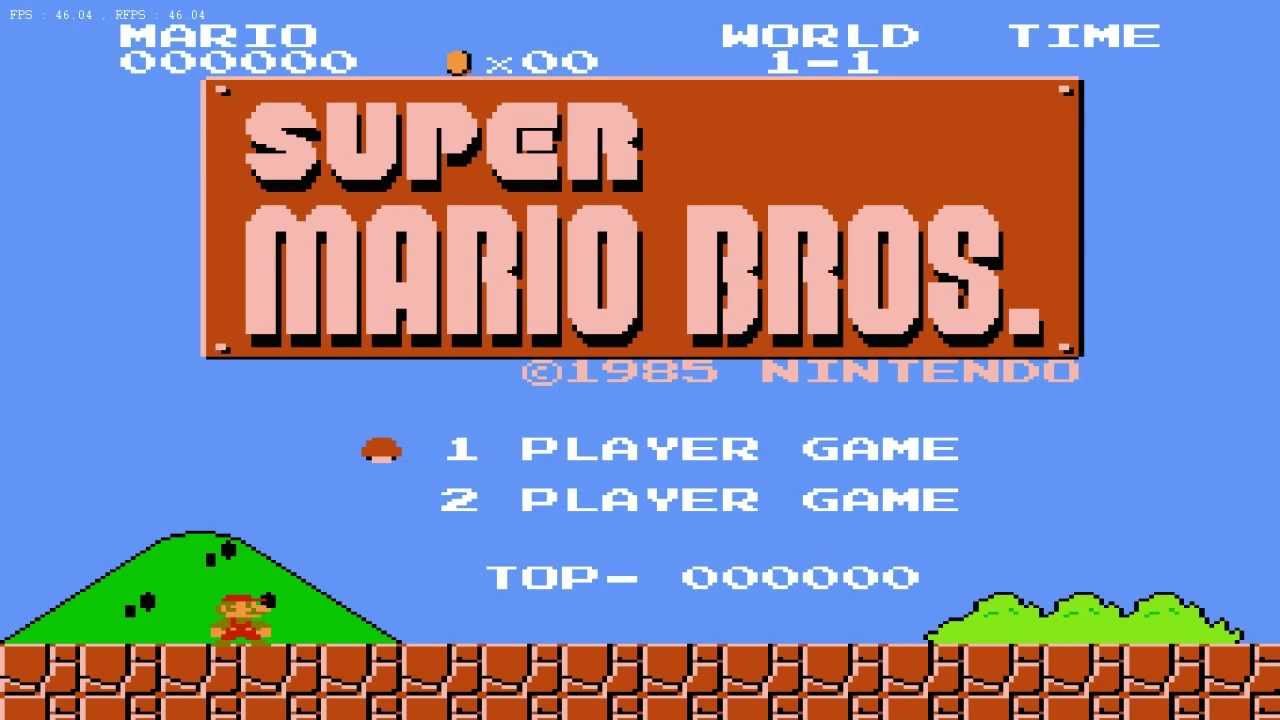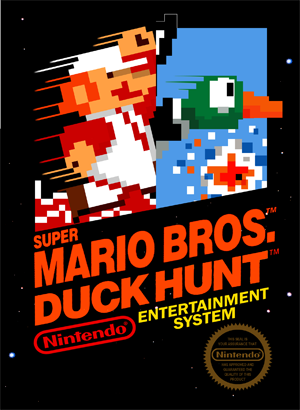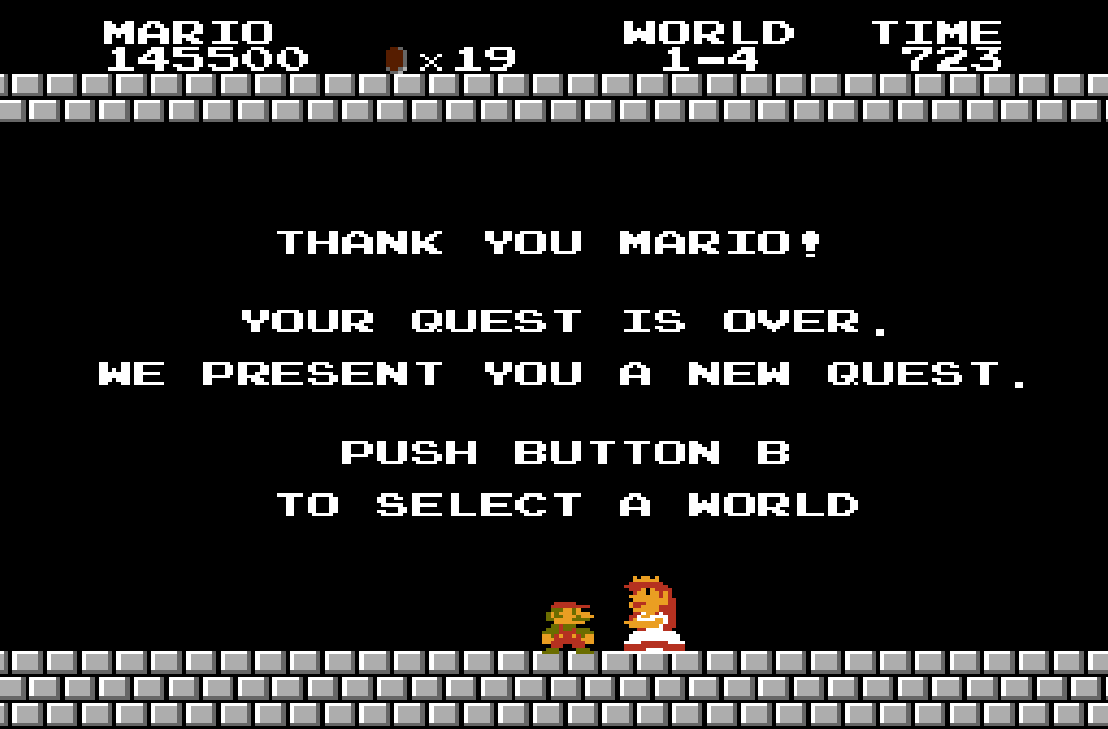Often touted as one of the titles that kicked off the video game craze worldwide, Super Mario Brothers is the progenitor of a long-winded and perennially welcome franchise among video game lovers of all ages. To humbly celebrate the beginning of my tenure as Gaming Editor for NRW, I felt it fitting to begin with a game that meant “the beginning” for so many of us retro gaming fans.
To begin the tale of this legendary game, we must go back to the early 1980s. The video game market in the USA was beginning to crash; the arcade and home console markets were sagging, and sales (read: profits) were down. Two young and bright-minded Nintendo employees, Shigeru Miyamoto and Takashi Tekuza, decided to build a game for the Famicom System (Japan’s version of the NES) based off a character featured in two of Shigeru’s previous arcade successes, Donkey Kong and 1983’s Mario Bros. SMB was originally intended to be a send-off for the Famicom, as a new disk-based version of the system was being developed in Japan (hardcore gaming historians will know better the differences between American and Japanese consoles released by Nintendo; I will focus on the games!). Instead, the game ended up buoying the entire product line, both at home and abroad. Super Mario Bros. was released in 1985 in Japan, and was packaged as part of the Nintendo Entertainment System itself from 1987 on in the United States; in fact, most of us are familiar with it as half of the combination cartridge that also contained the light gun game Duck Hunt.
In Super Mario Bros. the player controls Mario (or, if you’re player 2, you control Luigi, who is simply a different-colored Mario for all practical purposes, at least in this game) as he races to rescue Princess Toadstool from the wicked Bowser. Mario must journey through eight “worlds,” each containing a final castle within which he must fight Bowser or one of his nearly identical lackeys. Bowser himself waits at the end of the eighth world, along with poor Princess Toadstool. The stages in each world vary between aboveground, below ground, and even underwater. While the scenery doesn’t change much or have a whole lot of detail, the difficulty slowly increases as you get closer to the final confrontation. Mario must avoid koopas (standard turtle-shelled foot soldiers), fireballs, sentient bullets, hammer-flinging turtle-men, and even fish and squid in the underwater levels.
Anyone who played this game for any length of time (and let’s be honest, it came with the NES, so most of us did) has much of the background music burned into their brain cells. Koji Kondo composed the six melodies that make up SMB’s soundtrack, and would go on to write much of the music for later games in both this series and the Legend of Zelda adventure game series. The main theme, heard in World 1-1 and repeatedly throughout the game, is an indelible piece of pop culture audio. It is as timeless and classic as SMB itself.
It goes without saying that the enormous success of Super Mario Bros. led to numerous spin offs and sequels. The SNES saw a release of the game, along with two of its sequels and “The Lost Levels” (the actual, canonical Japanese immediate sequel to the original), and retoolings and continuations of the franchise continue to this day.
SOME THINGS YOU MIGHT NOT HAVE KNOWN:
-
The game’s US sequel, Super Mario Bros 2, had a vastly different gameplay style, because it wasn’t actually the proper sequel to the original. It was released in Japan as Doki Doki Panic.
-
Originally, the game was to feature a shooting-style set of controls. At some point, the focus shifted to Mario’s signature long leap, and the original shooting concept was discarded. It was considered as a special stage where Mario would ride on a cloud and shoot enemies; this was also discarded, but the sky/cloud “special” areas remain.
-
There is an “unbeatable” glitch in the game known as the “Minus World” that requires the exploitation of another bug that involves moving through bricks.
-
Hudson Soft developed and released a “special” version of the game for the NEC PC-8801 and Sharp X1 computer systems in 1986, featuring new levels and new enemies, including Donkey Kong.
-
The infamous “Infinite 1-UP Trick” was completely on purpose, and the game’s design staff was actually amazed at players’ ability to exploit it so well; they had expected it to be very difficult to pull off.
-
Though Koji Kondo had done some musical work for Nintendo previously, this game’s soundtrack was his first major solo score work for a video game release. Previous to this, he co-wrote the score to the game Devil World with Akito Nakatsuka, but had not written a score for a Nintendo game by himself.
There is no denying SMB’s place in video game history; it brought the industry out of its slump (a slump that destroyed Atari, but because of this and other games, Nintendo survived), defined the side-scrolling platform genre for a generation of gamers, and set precedent for one of video gaming’s most recognizable household names.







